The French bowline is a knot most often used to rescue injured people. Ropes tie around the person in a way that safely and securely lifts them. Once secure, rescuers can transport them elsewhere for medical help. The loops are adjustable, secure, and safe.
Other uses for the French bowline knot include:
- Boating
- Theater
- Making shackles
- Connecting two ropes
Four knots similar to the French bowline knot include:
- Spanish bowline knot
- Inline Figure 8
- Bowline on a bight
- Alpine butterfly loop
- Figure 8 Follow Through
- Double Figure-8 loop
- Yosemite Bowline
Follow the simple directions below to learn how to tie a French bowline knot.
What Is The French Bowline Knot?
A French bowline, also known as a Portuguese bowline, comprises two adjustable loops.
French bowlines are good for making a temporary Bosun’s chair. Bosun’s chairs are useful for moving an injured person, even when they’ve lost consciousness.
Weight Distribution
The construction of the knot distributes the person’s weight evenly across the rope. It prevents all the person’s weight from being centered on the knot. Having a more even weight distribution prevents injury to the person during transport. These knots are very safe for moving a person.
The size of the loops are easily adjusted to fit the size of the person that needs moving. Dressing the knot in this manner makes the knot safer and more effective.
It’s also possible to add more than two loops to the French bowline. The more loops the knot has, the safer the person or object is that’s being transported.
It’s also necessary that the weight is evenly distributed across both loops. The knot may become unstable if one loop takes more weight than the other.
The weight of loads must be in a downward direction; otherwise, the knot can come undone.
Handling Loads
While loaded, it’s nearly impossible to untie the knot, making it more secure. Yet, if the knot is not loaded correctly (with downward force), the knot can come untied.
French bowlines can easily connect one rope to another. So, they are helpful for many purposes when more than one rope is needed.
Easy Tying
These knots are also helpful because users can tie them with one hand. So, the other hand can remain free for other jobs. Only needing one hand is particularly useful in emergencies.
Does A Bowline Tighten Under Pressure?
Like traditional bowline knots, French bowline knots cannot tighten.
Still, French bowlines are secure knots that become more secure under heavy loads. The person’s weight presses down on the knot but does not tighten it. The knot becomes more secure because of the weight distribution rather than tightening. The person’s weight is distributed over a broader area on the rope. So, when used with a load (aka a person), the French bowline will not slip.
How To Tie The French Bowline Knot
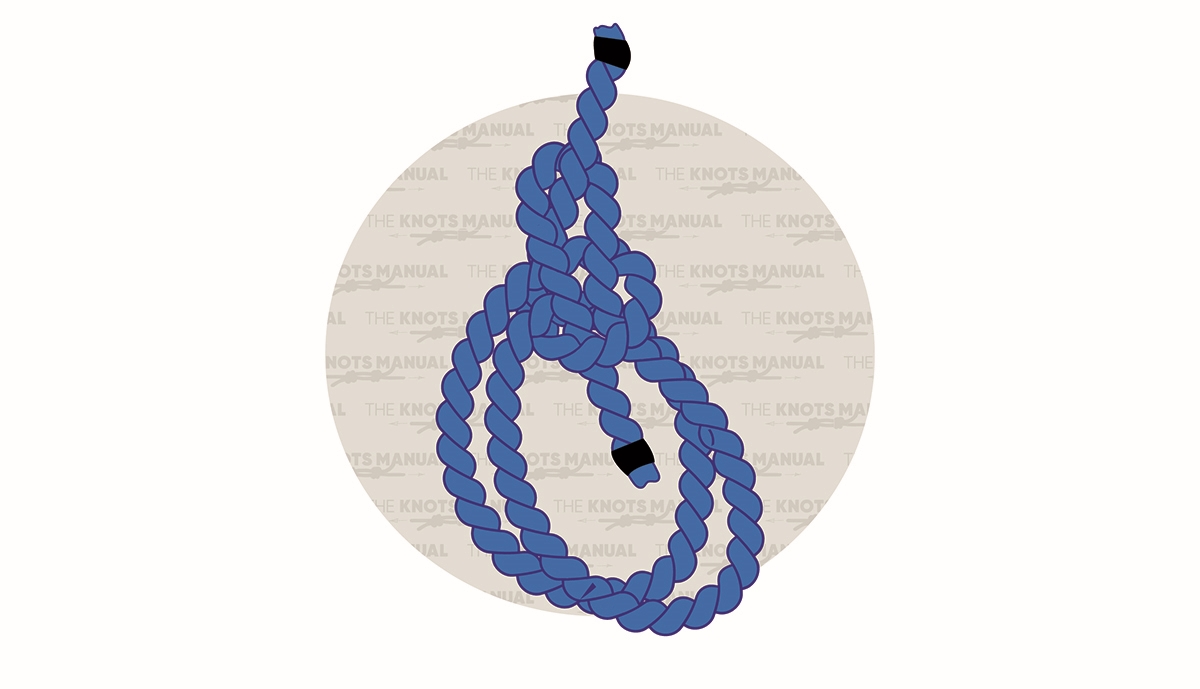
Learn how to tie a French knot by following these six simple steps:
Step 1:
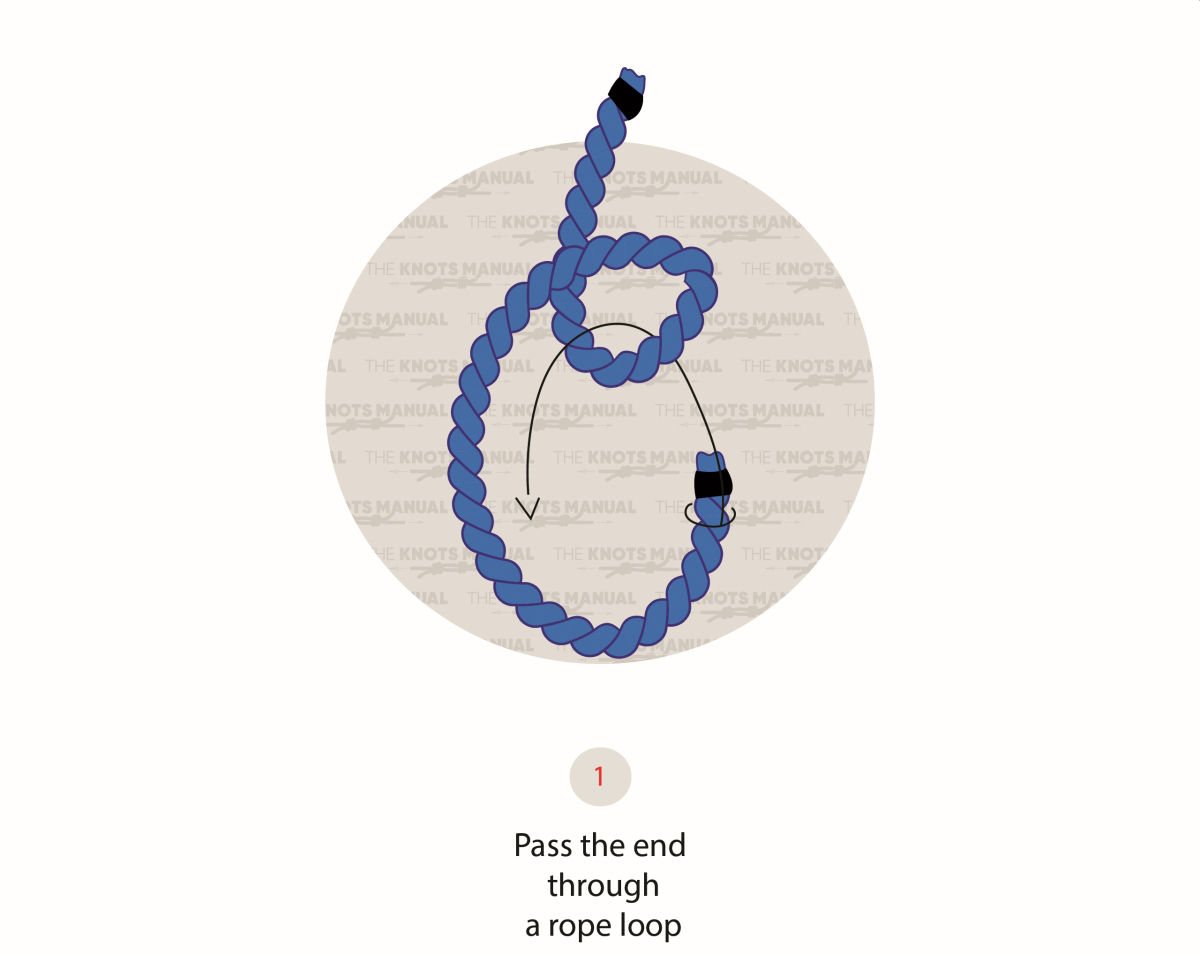
Form a loop in the standing part of the rope. Then, pass the working end through the loop.
Step 2:
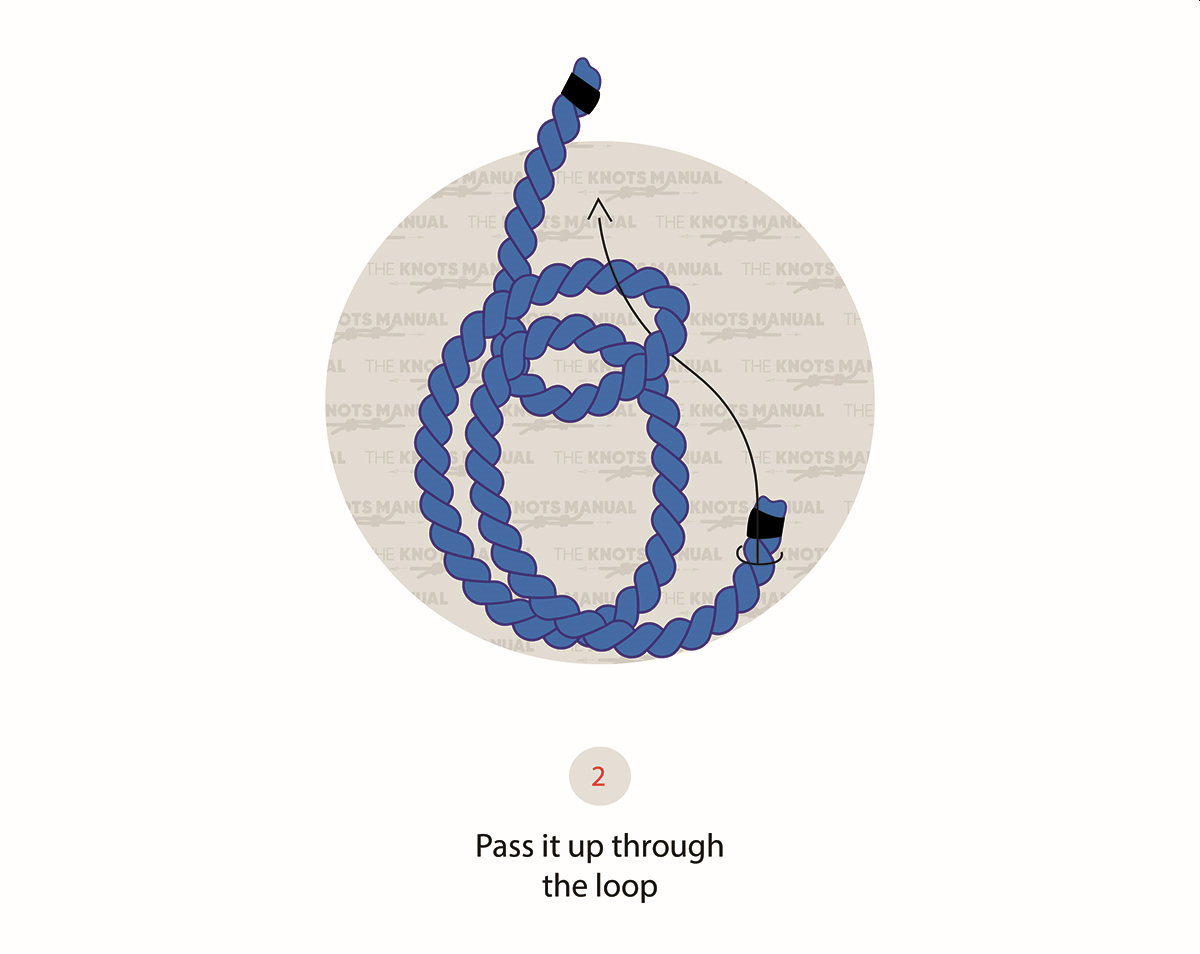
Pass the working end through the loop a second time.
Step 3:
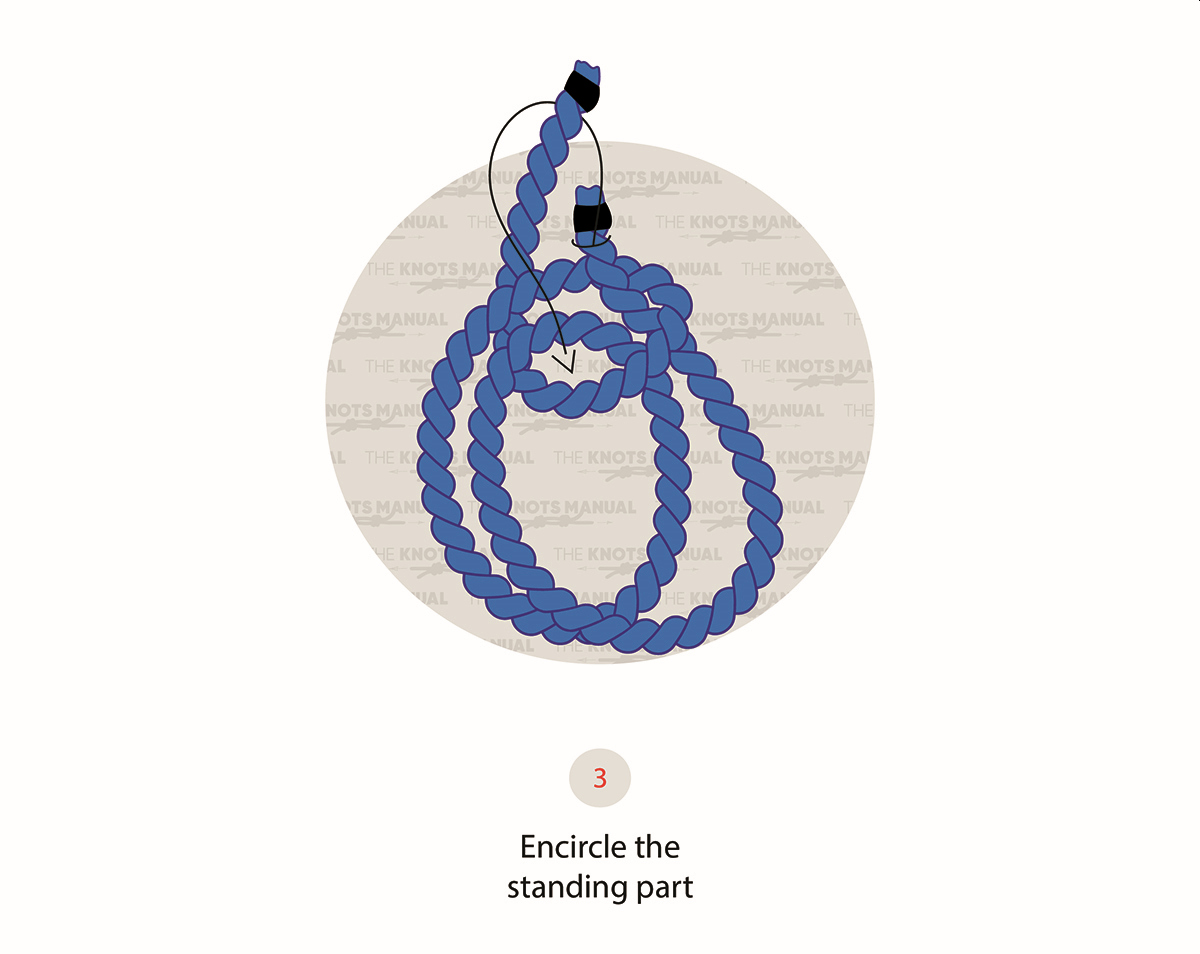
Wrap the working end around the standing end.
Step 4:
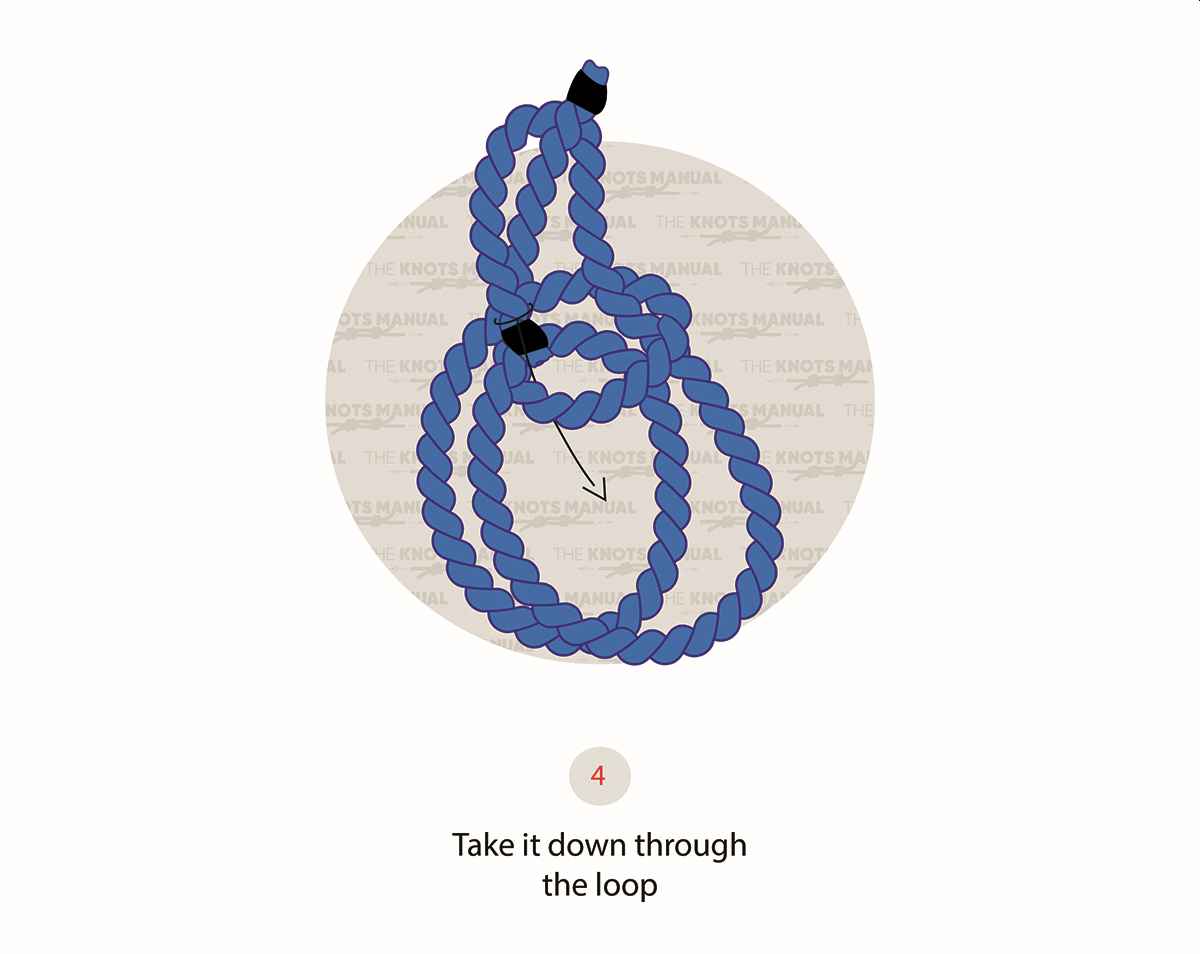
Pass the working end down through the loop.
Step 5:
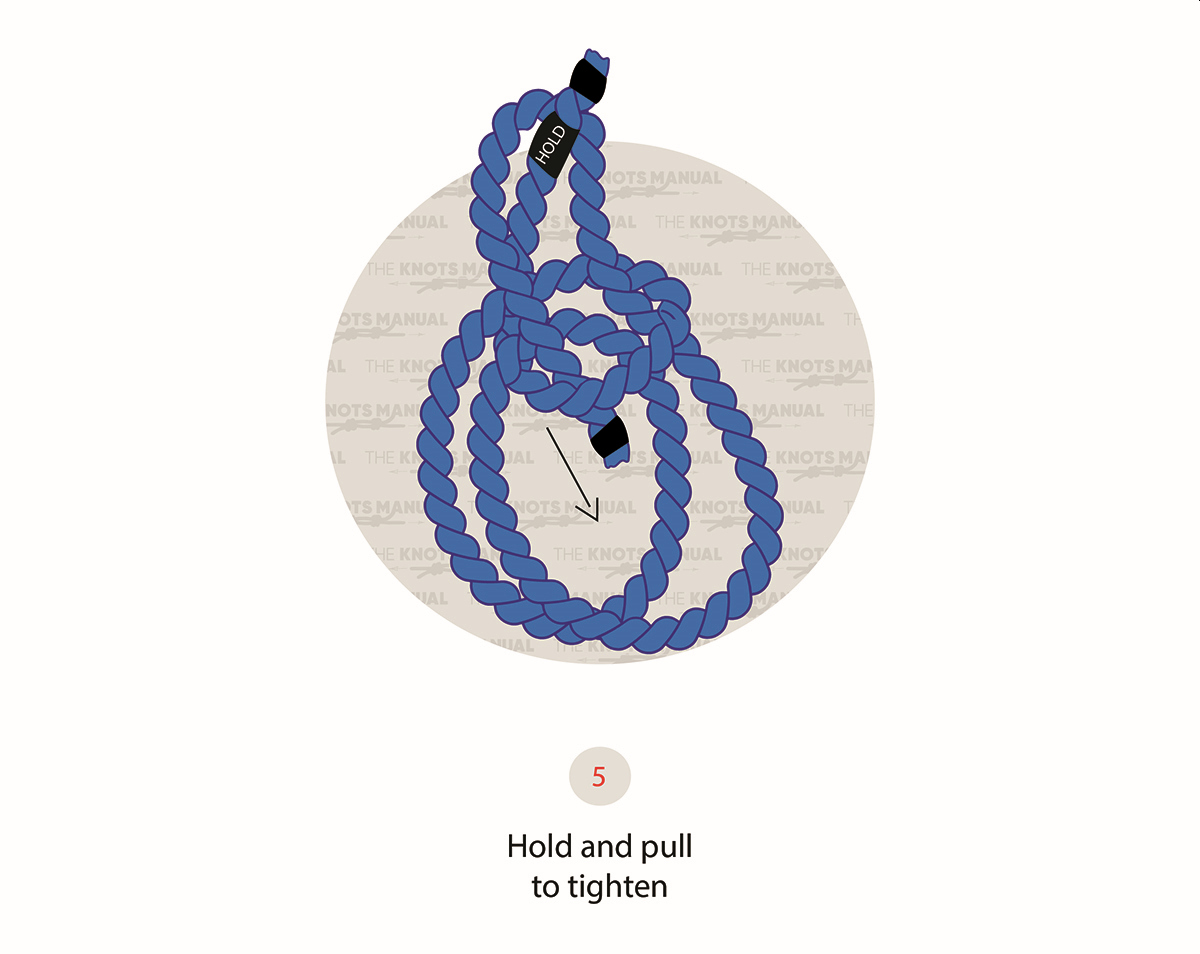
With one hand, hold the standing end. With the other hand, pull down on the working end to tighten the knot.
Step 6:
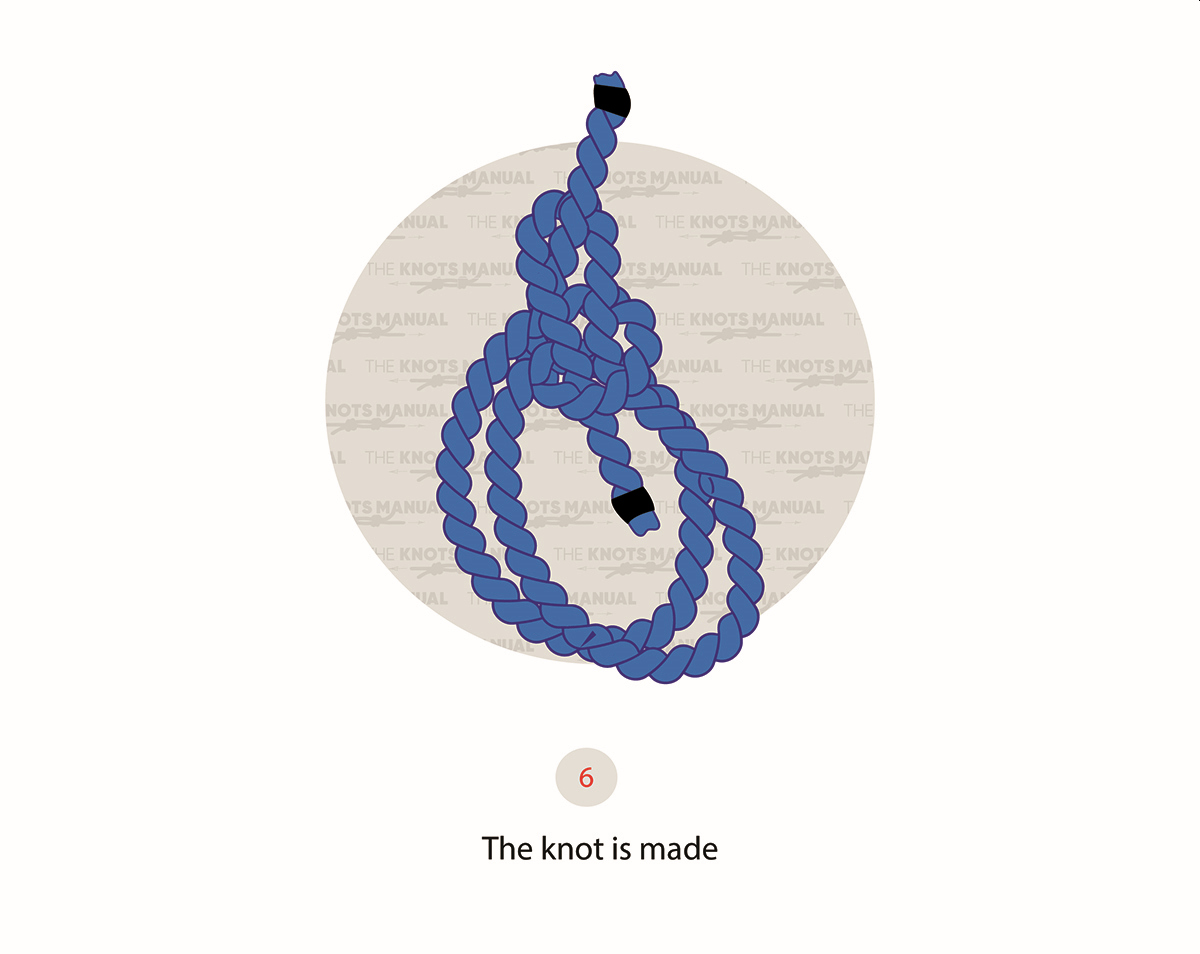
The knot is complete.
The Uses Of The French Bowline Knot
The primary use of a French bowline knot is to create a Bosun’s chair to move an injured person. The first loop goes around the person’s chest and under their arms for support. The other one tucks under their rear and acts as a seat.
Other Uses Of The French Bowline Knot
Besides rescue, this knot is also helpful in moving heavy objects.
Other situations that the French bowline is useful for includes:
- Fastening mooring lines
- Rigging of backstage equipment in theaters
- Tying wrist or arm shackles
Knots Similar To The French Bowline Knot
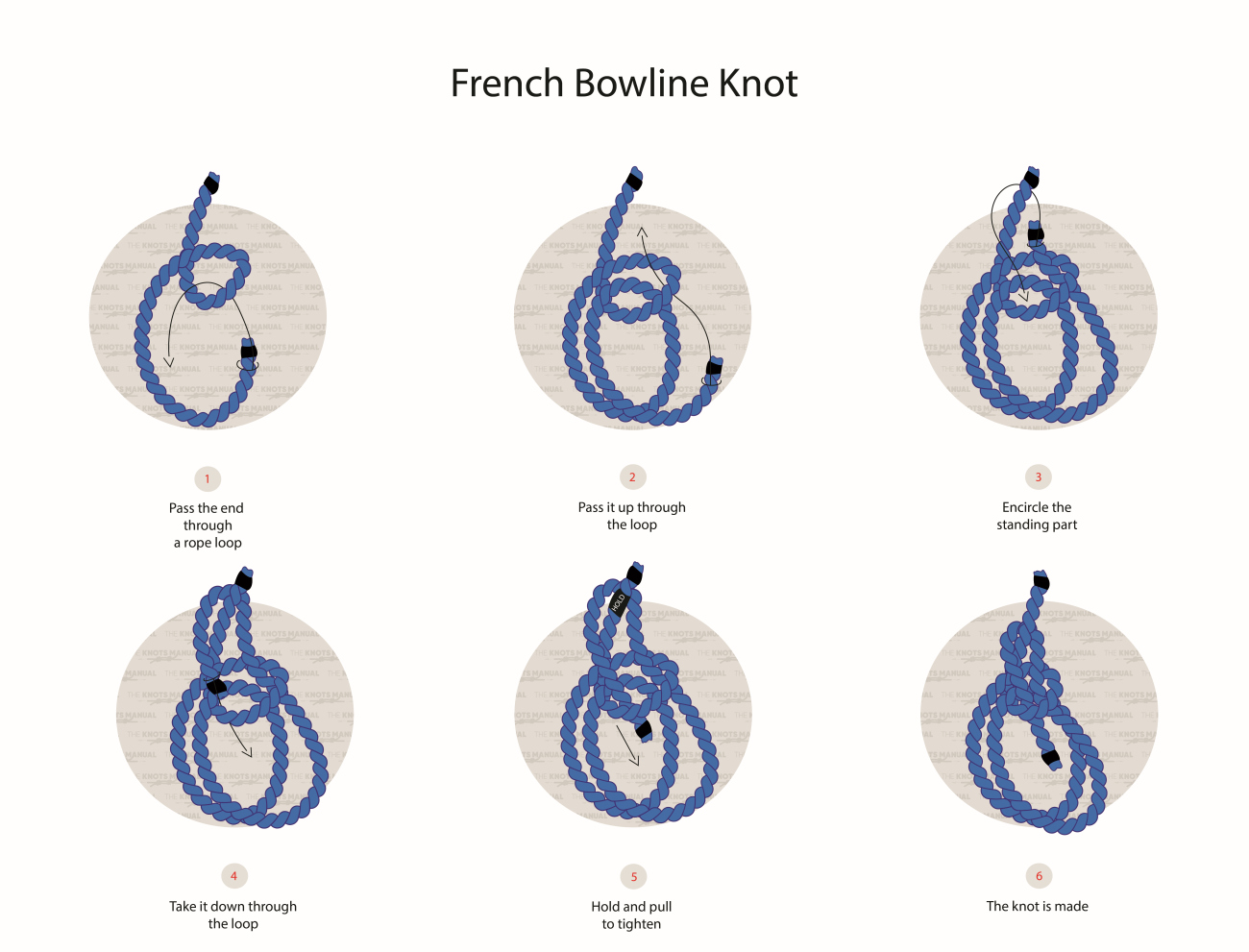
Spanish Bowline Knot: These knots also comprise two loops, and are used to lift an injured person. These are more often used when the injured person is conscious. One loop sits around each leg, and the person holds onto the rope’s standing part.
For an unconscious person, it works more like a French bowline. The first loop goes around the chest and under the arms. Yet, the second loop goes around the knees rather than under the rear like a Frech bowline.
Bowline on a Bight: These knots also form two loops and can act as a Bosun’s chair. Unlike a French bowline, these knots are easy to untie, even under a load. They are sometimes used in climbing sports as well, as a replacement for the figure-8 knot.
Alpine Butterfly Loop: These knots form a secure loop in the middle of a rope. The way the knot twists forms a structure that looks like butterfly wings. After tightening, the butterfly shape is no longer noticeable.
They are more secure than bowline knots and easy to untie, even after exposure to a load. Alpine butterfly loops are common among hikers, boaters, climbers, and scouts.
Figure-8 Loop: These knots form a loop at the end of a rope, using a bight. Figure-8 loops are useful for securing an object. The downside is that they are prone to jamming and are difficult to untie after exposure to a heavy load. They are common among climbers and spelunkers.
FAQs
Is The French Bowline Knot Useful For Fishing?
The French bowline isn’t the first knot outdoors people think of when going fishing, but it can be helpful. Boaters may use this knot to lift and move heavy items. Often, fishermen are likely to use the French bowline to connect two fishing lines. Likewise, they can use it to connect ropes on their boats.
Who Invented The French Bowline Knot?
It is unclear when the French bowline was invented. John Smith first mentioned the original bowline. The knot came up in his book, Seaman’s Grammer, published in 1627.
The next official mention of the bowline knot was in the Ashely Book of Knots, published in 1944.
How Many Bowline Knots Are There?
Officially, there are 46 variations of the traditional bowline knot. These knots are all listed in the Encyclopedia of Knots and Fancy Rope Work. The book was written by Graumont and Hensel, and published in 1942.
The book Knotting Matters listed extra bowlines. Many of the bowlines are not found in the Encyclopedia of Knots and Fancy Rope Work. Altogether, there are 55 known variations of the traditional bowline knot. Yet, there may be more.
